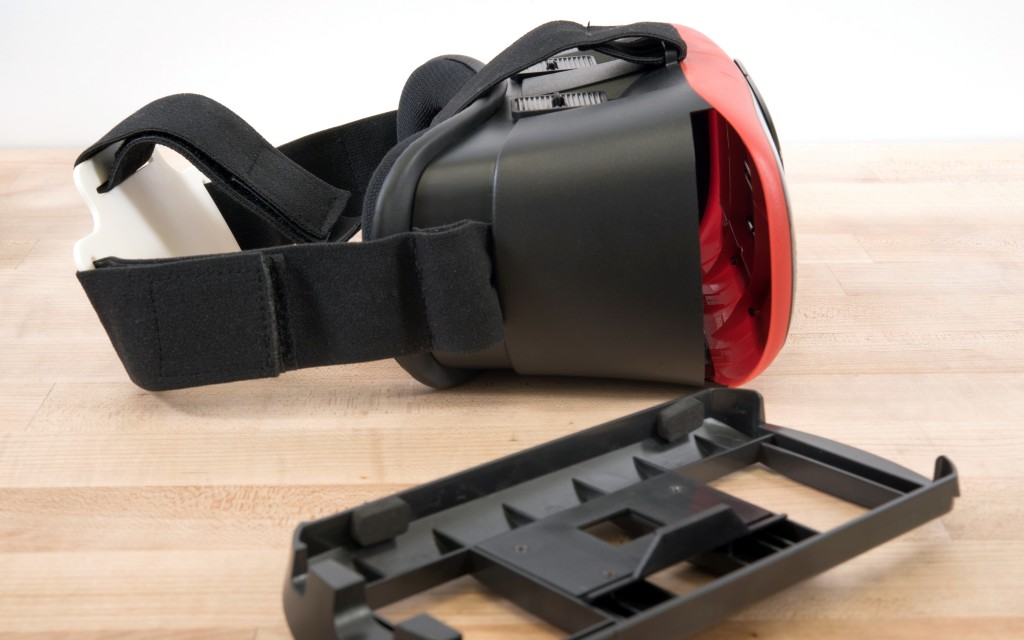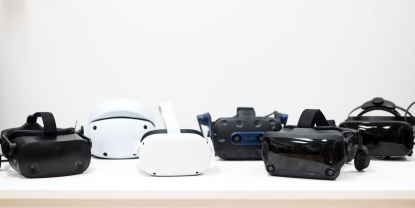Bnext VR Review
Our Verdict
Our Analysis and Test Results
Performance Comparison
Interactiveness
Taking credit for the largest portion of the overall score, the set of tests that comprise our interactiveness metric is by far the most important for most people. Scores were based on the ability of each headset to allow you to interact with your VR environment and the accuracy of the motion tracking. Unfortunately, the Bnext delivered an overall terrible performance.
There are no buttons on the headset and no hand controllers, restricting you to only passively observing your VR experience. However, the motion tracking is alright, as it relies on the phone's sensors, so it is on par with the other Cardboard-style mobile headsets.
Visual Immersiveness
The Bnext delivered a relatively unremarkable performance here. This is based on the sharpness and overall condition of the image shown, if the headset adequately blocked ambient light, and its field of view.
Plenty of light leaks into this headset, with noticeable amounts around your temples and the bridge of your nose — enough to be decently distracting. The resolution of the image is dependent on the phone used, but we found text and images to be crisp and sharp when using a Samsung S8. The Bnext has a decently wide field of view to its credit.
Comfort
We rated each headset on how comfortable it was to wear for long periods of time, whether or not you could easily wear prescription glasses when using the product, and if the headset is breathable enough to keep your face from getting overly sweaty. The Bnext delivered another average performance.
This headset offers some padding on your forehead, but exerts a non-trivial amount of pressure on the bridge of your nose. The head strap also falls where glasses do, adding to the discomfort. Speaking of glasses, there is some room to wear spectacles with this headset, but not much. Larger frames may be incompatible. However, this headset does have some ventilation, preventing your face from getting overly sweaty.
User Friendliness
Our User Friendliness metric consisted of rating each product on the difficulty in installing the smartphone and connecting headphones, the possibility of inadvertently hitting buttons on the phone, and if you needed to remove your smartphone from its case to properly use the headset. The Bnext did quite poorly in this aspect.
The Bnext doesn't have any extra space for your phone, forcing you to remove it from its case before you install it in the headset. This product also has the most difficult installation process, forcing you to pull out a holder from the headset and clamp the phone into it, then insert the whole assembly back into the headset. On top of all that, this clamp tends to press buttons accidentally, interrupting your VR experience.
This also makes it decently hard to insert headphones into your phone, as the headphone port is probably obstructed, depending on the model of smartphone used.
Ease of Setup
Our Ease of Setup metric evaluates each VR headset on the amount of effort it took to assemble the hardware and install the software, as well as comparing the minimum system requirements to run each headset. This is the only rating metric that the Bnext excels in.
The initial assembly is relatively straightforward, only having you add some padding to more securely hold your phone and adjust the lenses to match your eyes. There isn't a special software setup to use the Bnext, instead simply downloading your VR app of choice. This model also works with a wide variety of phones.
Value
This inexpensive VR headset isn't totally awful, but you can get a lot more bang for the buck with other products.
Conclusion
With a myriad of flaws and drawbacks, it makes it hard to recommend this headset. It works, but there are a whole host of better options than the Bnext VR, regardless if you want a top-of-the-line product or a budget model.











